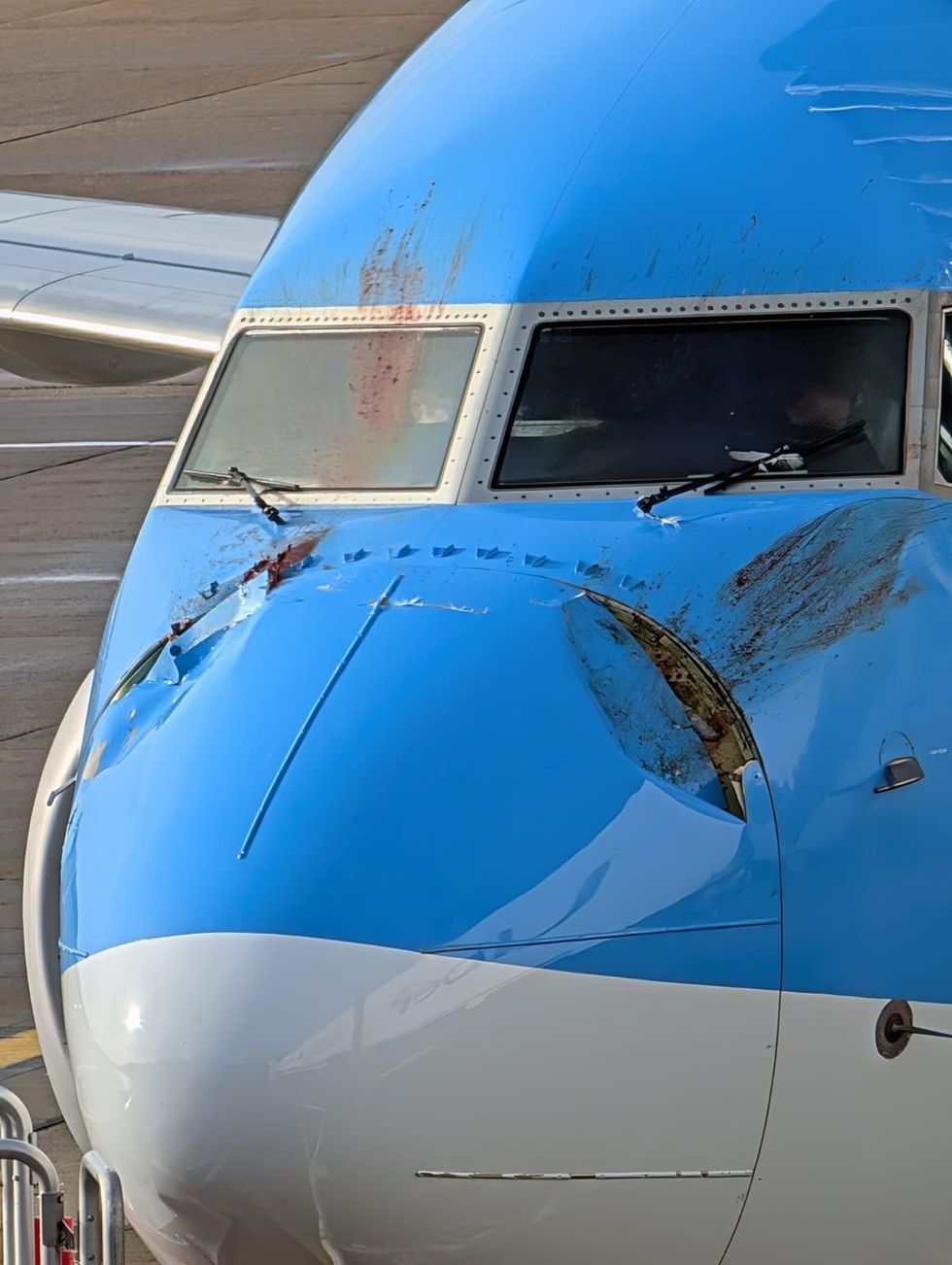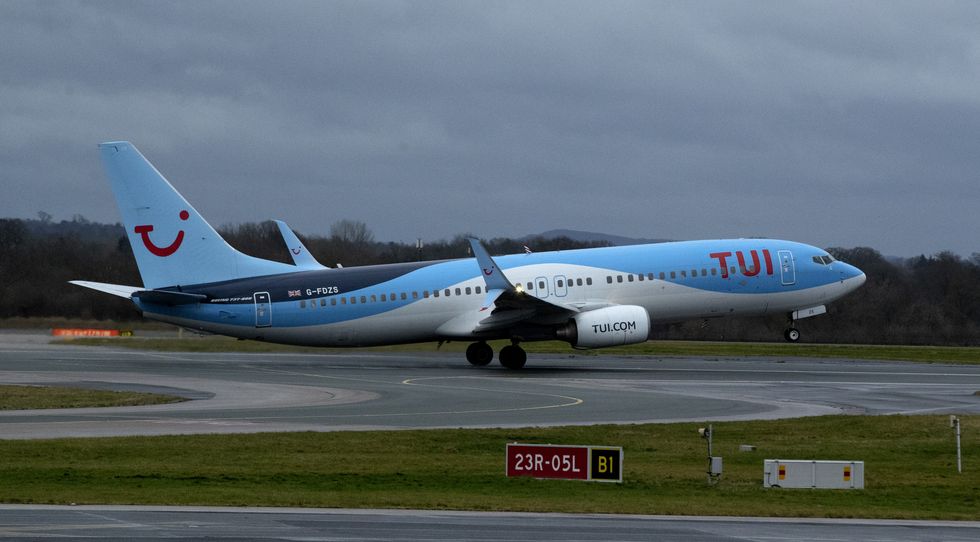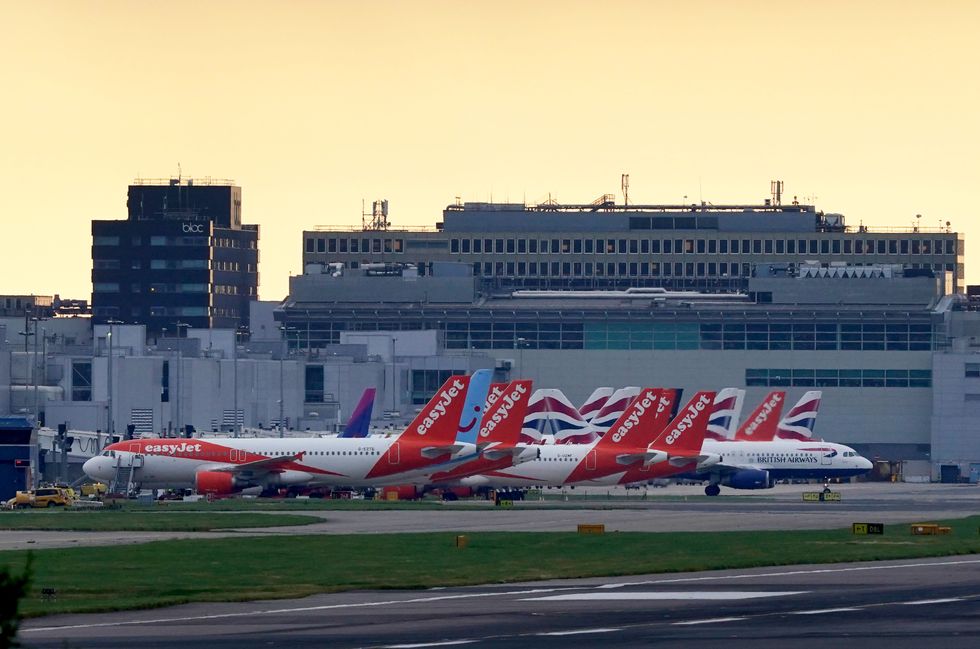Holly Bishop
Guest Reporter
A Tui plane was forced to make an emergency landing after two swans smashed into the main body of the jet.
The Boeing 737, which was en route to Cape Verde, was only 1,000 feet above Gatwick Airport when pilots issued a mayday call.
The 185mph bird strike cracked the windscreen and pilots were forced to ground the plane just minutes after take-off.
After landing, the plane needed an escort from the runway to the stand as the pilots could not see out of the smashed windscreen, which was also covered in blood.

Photos taken after the strike also appear to show chunks of bird matter on the outside of the plane.
The strike is also understood to have damaged critical systems in the aircraft.
Speaking to The Sun, a source said: “Bird strikes are not uncommon at UK airports but this was on a scale of terror never seen before.”
The source said at least two huge swans crashed into the aircraft as it was taking off.
MORE LIKE THIS:

The “sheer size” of the birds, as well as there being two of them, completely destroyed the fuselage.
“The strike breached the pressure bulkhead so the pilots couldn’t pressurise the plane,” the source added.
“It was carnage and the safety of the plane was in doubt. The pilots did a terrific job in the most testing of circumstances.”
The impact of the strike would have been felt by all 192 passengers onboard the Tui plane, experts said.

The damages to the plane will be around the £1million mark, the source said, and it will likely need to be grounded whilst it is fixed.
In December 2024, a South Korean passenger plane crashed following a bird strike. 179 people onboard were killed, with just two of the crew surviving.
Jeju Air flight 7C2216, arriving from Bangkok, Thailand, erupted into a fireball after it tried to land without wheels and veered off the runway.
South Korea's transport ministry confirmed that air traffic controllers alerted the pilots of the doomed flight to the risk of a bird strike just three minutes before the plane’s landing attempt.
Find Out More...
The Boeing 737, which was en route to Cape Verde, was only 1,000 feet above Gatwick Airport when pilots issued a mayday call.
The 185mph bird strike cracked the windscreen and pilots were forced to ground the plane just minutes after take-off.
After landing, the plane needed an escort from the runway to the stand as the pilots could not see out of the smashed windscreen, which was also covered in blood.

Photos taken after the strike also appear to show chunks of bird matter on the outside of the plane.
The strike is also understood to have damaged critical systems in the aircraft.
Speaking to The Sun, a source said: “Bird strikes are not uncommon at UK airports but this was on a scale of terror never seen before.”
The source said at least two huge swans crashed into the aircraft as it was taking off.
MORE LIKE THIS:
- Pilot faints mid-flight as aircraft forced to make U-turn while stewards tried to save captain
- Jet2 flight en route to Spain forced into emergency landing in Manchester over crack in window
- 'Never seen anything like it!' Police remove easyJet passengers from flight after staff 'threatened'

The “sheer size” of the birds, as well as there being two of them, completely destroyed the fuselage.
“The strike breached the pressure bulkhead so the pilots couldn’t pressurise the plane,” the source added.
“It was carnage and the safety of the plane was in doubt. The pilots did a terrific job in the most testing of circumstances.”
The impact of the strike would have been felt by all 192 passengers onboard the Tui plane, experts said.

The damages to the plane will be around the £1million mark, the source said, and it will likely need to be grounded whilst it is fixed.
In December 2024, a South Korean passenger plane crashed following a bird strike. 179 people onboard were killed, with just two of the crew surviving.
Jeju Air flight 7C2216, arriving from Bangkok, Thailand, erupted into a fireball after it tried to land without wheels and veered off the runway.
South Korea's transport ministry confirmed that air traffic controllers alerted the pilots of the doomed flight to the risk of a bird strike just three minutes before the plane’s landing attempt.
Find Out More...
